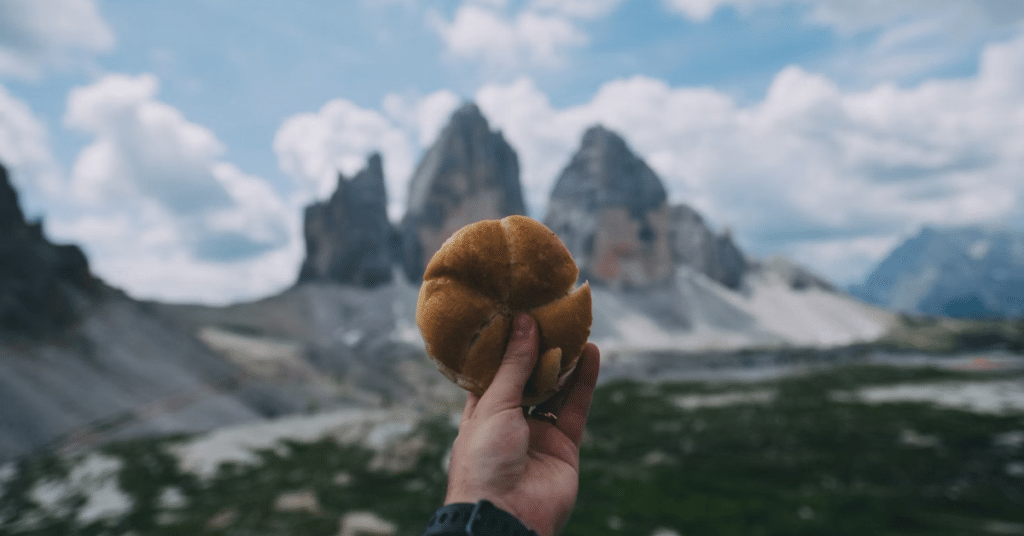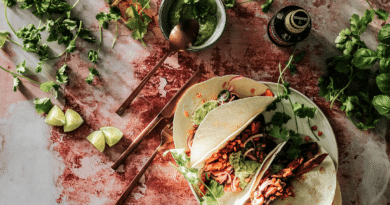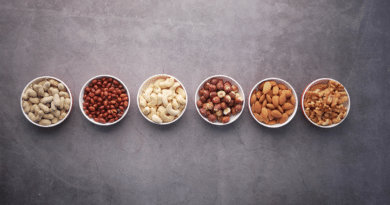7 Best High Energy Foods For Hiking Expeditions
This list of high energy foods for hiking has been set out to keep you motivated and on track when the going gets tough out there. You can never underestimate the importance of eating right and applying more focus to the routines that impact your exertions.
So, the saying goes: you are what you eat. The intricacy of your diet affects everything about you, from your mood to the physique you walk around with. Motivation will also depend on what you’re putting into your body as well.
For this blog, we’ve picked apart our favourite cheat codes for hiking nutrition. We’ll be weighing up the importance of dried fruit (mangos, apples, and berries) and talking about everything else from cheese to dry salami.
The Hiker’s Diet
Of course, this will likely stir up some debate – who isn’t protective over the sanctity of their diet? Yet our aim is to enhance your next hiking or camping adventure. Before you head out into the wilderness, we want to ensure you have everything you need from a nutritional standpoint.
Don’t just grab the nearest energy bar. Explore our tips to stay nourished when it counts and to cater for the increased need for food and water that is evoked by outdoor excursions.
Hopefully we’ve covered the key considerations before your next hiking adventure. Remember to pre-hydrate with at least 4 cups of water before you set off. Then try to drink around 2 cups for every hour you’ve spent hiking. You always need clean drinking water on your person while you hike.
The right food makes all the difference. Suitable fuel gets you started and keeps you going, boosted at intervals by nutritious snacks during rest stops.

Food Safety Matters
Before we make ourselves hungry listing out our favourite hiking foods, let’s take a second to talk about food safety. It’s crucial that you stick to strict food safety practices from packing to plating.
Perishable food should never be kept in hot weather for over an hour. Otherwise, these foods quickly become unsafe to eat. Disposable wipes, biodegradable soap or hand sanitiser are needed to maintain a suitable level of hygiene as well.
Be sure to thoroughly wash your utensils, bowls, and plates. You might also want to carry a portable water filter, or purification tablets as well. Then of course the obvious rules come into play: wash your hands to reduce bacteria and germs. Also, keep ready-to-eat foods separate from raw meats.
A food thermometer might be needed to ensure your cooked food reaches a safe internal temperature. If you don’t have a fridge, you’ll need ice in an insulated cooler for perishable food. Store your leftovers in the cooler inside covered containers – ensure the ice hasn’t melted first.
It goes without saying that you should stay away from caffeine and alcohol. Neither of these drinks complement the activity of hiking at high elevation.
Anyway, let’s take a hike with our favourite foods before we suck the fun out of your next adventure!
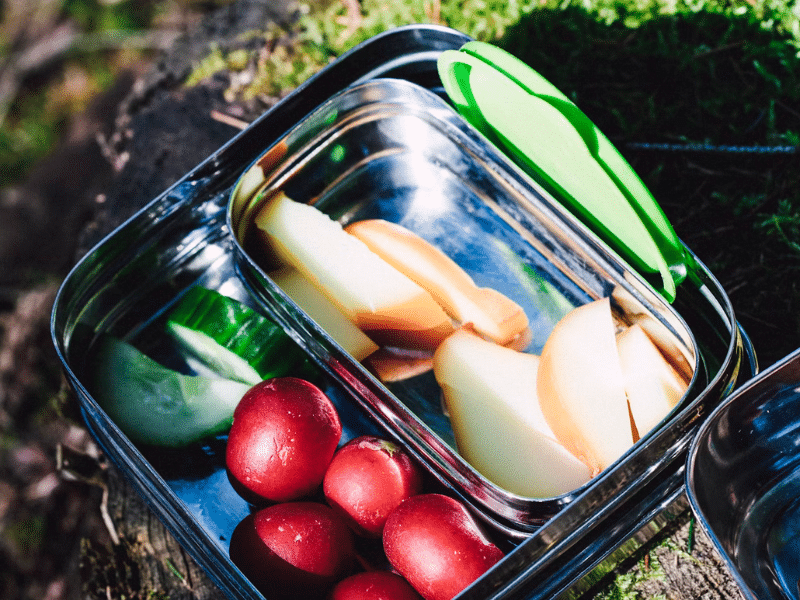
7. For The Grazers
Who doesn’t love grazing from a bag of trail mix? You can choose from assorted nuts, seeds, and nut-based bars. Cheese is an effective source of energy and chunks of chocolate can offer an added boost when you need it.
Snacks can supplement your meals on the trail. Just remember to store anything that needs to be preserved in a cooler. Nuts are a common trail snack and a great source of protein as well. It’s easy to crunch a few of these while you walk.
6. For Desert And Breakfast
Campfires and marshmallows are a match made in hiking heaven. Bring your marshmallows to toast for a post-meal desert. The following day you might want to try some powdered eggs for a popular alternative real thing.
Popular trail breakfasts need to be lightweight and easily prepared. Dehydrated eggs are warm, delicious and can benefit from added flavour if you pack your salt and spices.
Alternatively, many hikers will wake up to oatmeal and start their day with food that’s high in fibre and healthy carbohydrates. For extra protein why not mix in peanut butter or sprinkle in some nuts, or dried fruit. Delicious!

5. For Fuel
To keep you going on the trail you may need reserves of whole-grain pasta, couscous, and rice mix. Whole-grain tortillas or bagels are ideal when it comes to waking up and getting your engines into gear.
Dry foods instant noodles and soup mixes are convenient to carry and don’t ask for much room in your pack. All these foods are easy-to-make and pair nicely with dried vegetables and beans. Just be mindful you may need to boil water in some cases.
4. For Carnivores
Meat is a luxury in the outdoors so you might be relying on canned fish in individual servings. Ready-made tuna salad is a fantastic option to refuel before the next leg of your journey. Dried meat jerky is a popular snack when you’re on the move as well.
You always want to travel light, so canned foods in easy-to-carry packages are preferable. Ready-to-eat packs of tuna and salmon offer a dose of healthy protein. Sometimes, you’re just looking for foods that can be wolfed down without having to break out any utensils.
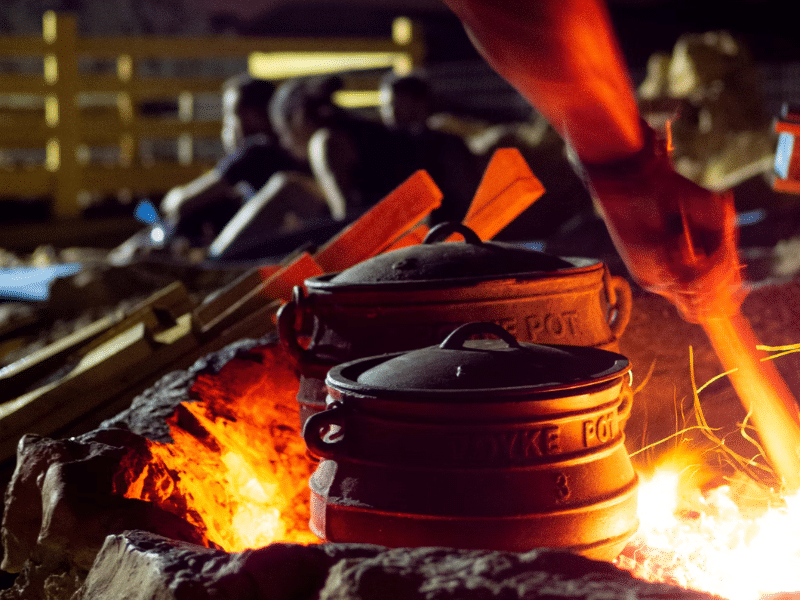
3. For Longer Adventures
If you’re headed out on a multi-day hiking adventure you will need to pack food for each day. Perishable foods can be kept in a cooler for a while, but you should also map out your smaller meals and snacks to fuel your exertions.
Easily packed basics can sustain you on the move, like fruit puree in a squeezable pouch – you can’t go wrong with the apple sauce. Also, freeze-fried foods are notable for their convenience if you don’t mind the extra expense. These calorie-dense meals can punctuate a long day with a welcome ending.
2. For Fruit Lovers
Fresh fruit is one food you might be able to find on the fringes of your trail. Nothing goes down like an apple freshly plucked from its tree. Whole fruit (apples, bananas, oranges) doesn’t require refrigeration either.
Fruits are energy sources that offer a sweet and refreshing break from packaged foods. Biodegradable foods also minimise the amount of cleaning up you’ll have to do. Just chomp down your organic fuel and get back to the trail.
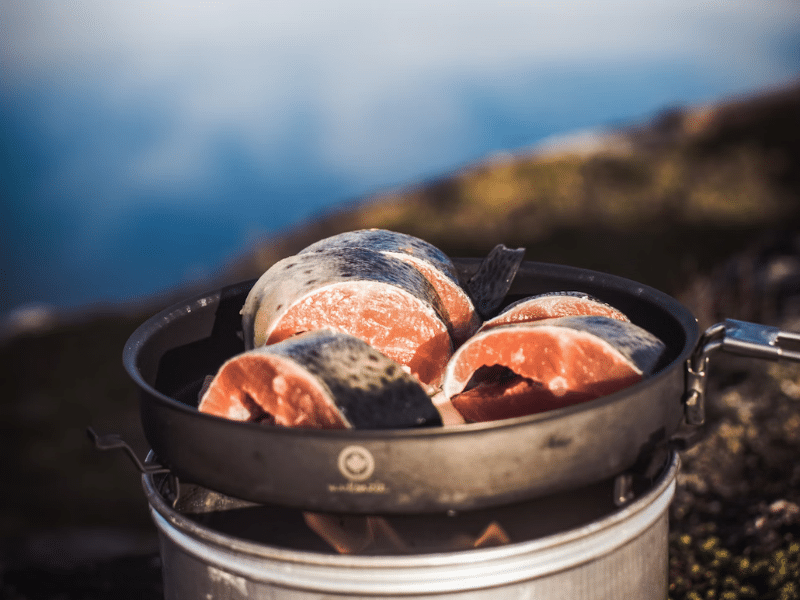
1. For Speedsters
Finally, for all you speedy hikers who are eating up trails every weekend, there’s plenty to be said for energy bars, chews, or gels. Granola bars are popular too if you don’t want to stop and waste time with culinary flair.
Granola bars are dense with protein and carbs – packed with nuts, dried fruit, and berries. If you want more flavour, you can seek out more sugary alternatives, or break out the honey for a little more mobile excitement on the trail.
The grazing bags we mentioned above are great for anyone who keeps a quick pace in the outdoors as well. Chunks of cheese and chocolate can be stuffed into your cheeks, hamster style. Then you can focus on churning out kilometres and leaving any of those sit-down, trailside chefs in your dust.
More Articles For Health And Nutrition
Rediscovering Root Vegetables: Nutritional Powerhouses Hiding in Plain Sight
The Allure of Exotic Fruits: Dragon Fruit, Kiwano, and Mangosteen

